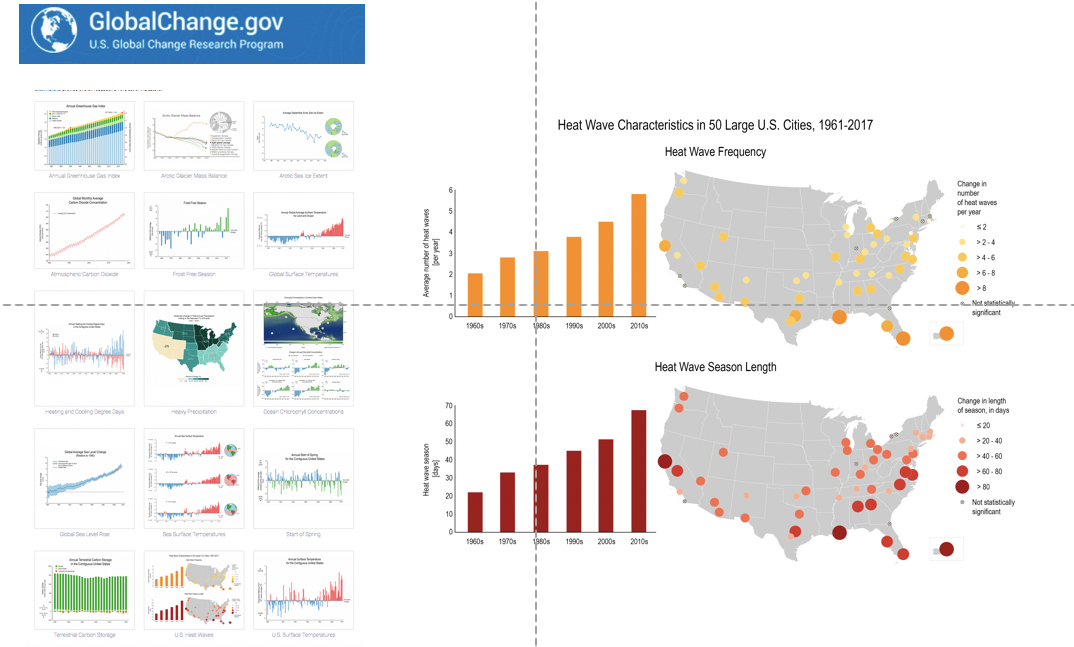Heat wave research highlighted in latest National Climate Assessment
by Healthy Cities Lab
Posted on November 26, 2018 at 6:30 PM

Dr. Habeeb's research on Heat Wave Trends was used as an indicator for the 4th National Climate Assessment Report released by the US Federal Government on November 23, 2018.
The report is an authoritative assessment of the science of climate change, with a focus on the United States. It represents the second of two volumes of the Fourth National Climate Assessment, mandated by the Global Change Research Act of 1990.
To state an article in the New York Times, global warming is now affecting the United States more than ever, and the risks of future disasters — from flooding along the coasts to crop failures in the Midwest — could pose a profound threat to Americans’ well-being. That’s the gist of Volume Two of the latest National Climate Assessment, a 1,656-page report issued on Friday that explores both the current and future impacts of climate change. The scientific report, which comes out every four years as mandated by Congress, was produced by 13 federal agencies and released by the Trump administration.
One of the most prominent conclusions and highlights from the climate report is that extreme hot weather is getting more common, and cold weather more rare. In the first chapter of the report, the National Climate Assessement states that heat-wave season has expanded by more than 40 days since the 1960s. Dr. Habeeb's work on heat wave indicators was directly used as a foundation for the assessments stated in the report:
Over the past two decades, the number of high temperature records recorded in the United States far exceeds the number of low temperature records. The length of the frost-free season, from the last freeze in spring to the first freeze of autumn, has increased for all regions since the early 1900s. The frequency of cold waves has decreased since the early 1900s, and the frequency of heat waves has increased since the mid-1960s. Over timescales shorter than a decade, the 1930s Dust Bowl remains the peak period for extreme heat in the United States for a variety of reasons, including exceptionally dry springs coupled with poor land management practices during that era.
Over the next few decades, annual average temperature over the contiguous United States is projected to increase by about 2.2°F (1.2°C) relative to 1986–2015, regardless of future scenario. As a result, recent record-setting hot years are projected to become common in the near future for the United States. Much larger increases are projected by late century: 2.3°–6.7°F (1.3°–3.7°C) under a lower scenario … and 5.4°–11.0°F (3.0°–6.1°C) under a higher scenario … relative to 1986–2015.
Extreme high temperatures are projected to increase even more than average temperatures. Cold waves are projected to become less intense and heat waves more intense. The number of days below freezing is projected to decline, while the number of days above 90°F is projected to rise.
Dr. Habeeb's heat wave research has also been referenced at the government's GlobalChange.gov website and the National Oceanic and Atmospheric Administration.


You can read the original publication by Dr. Habeeb here.